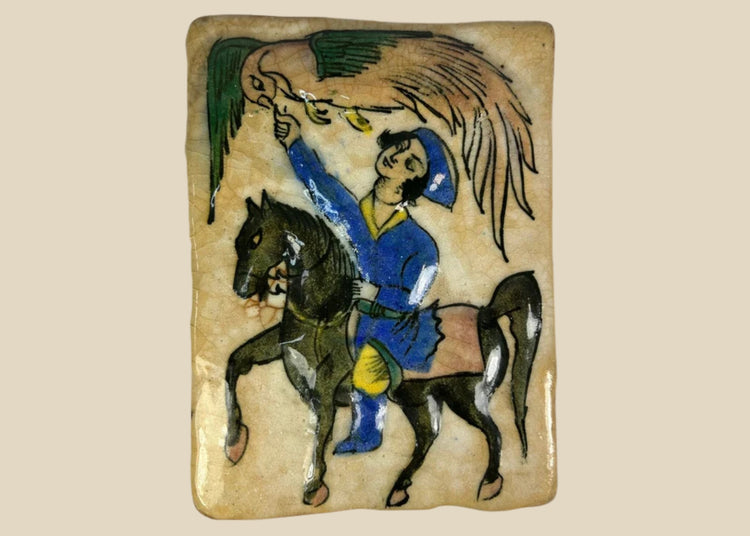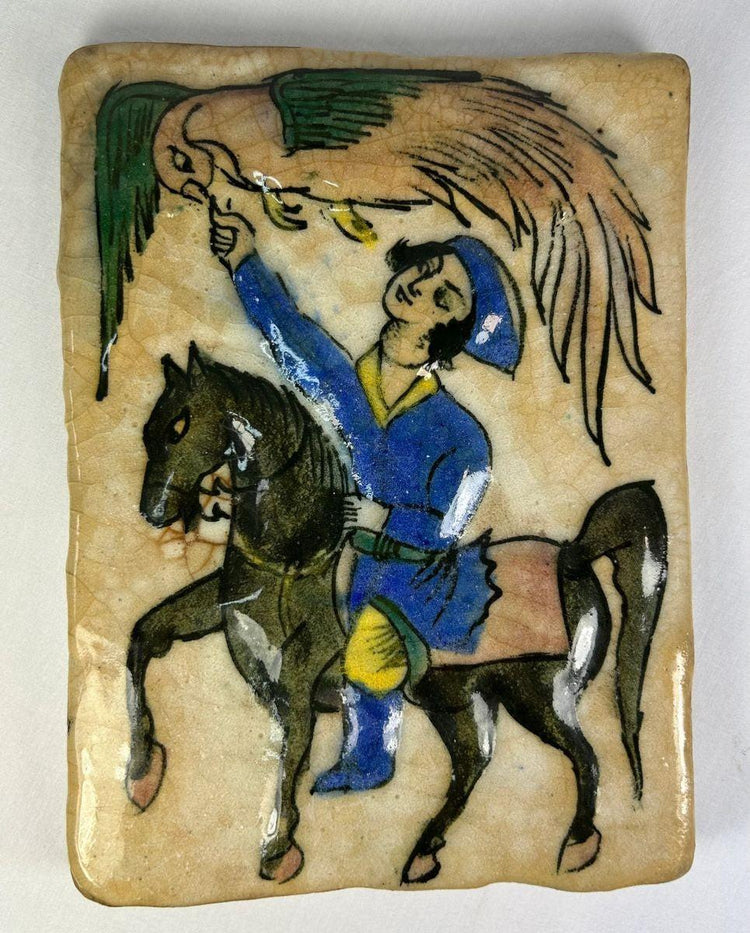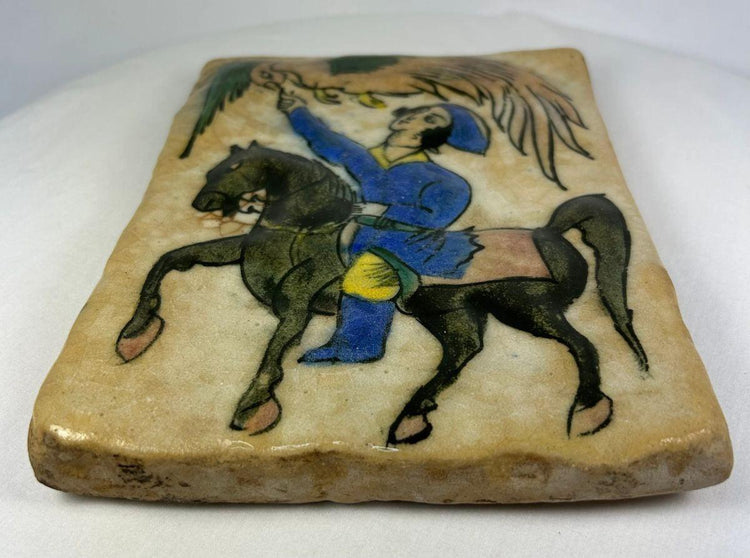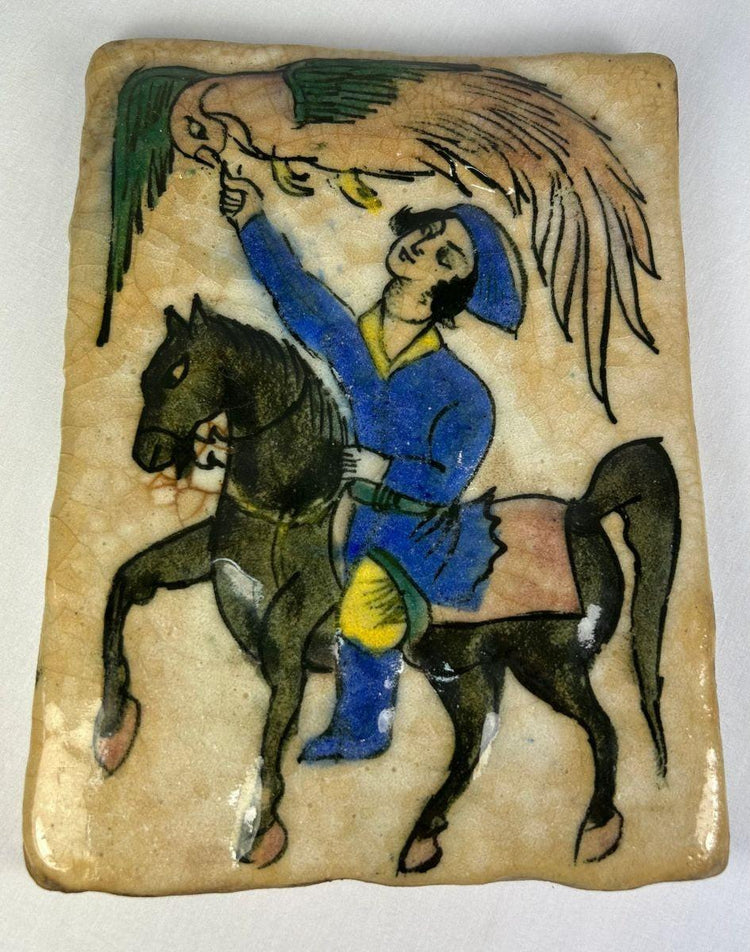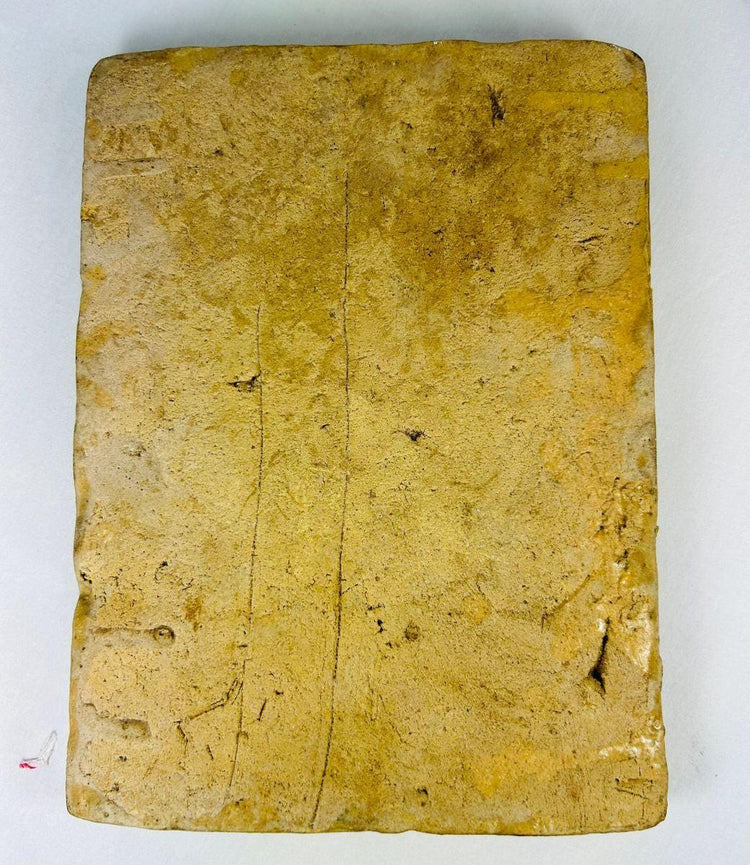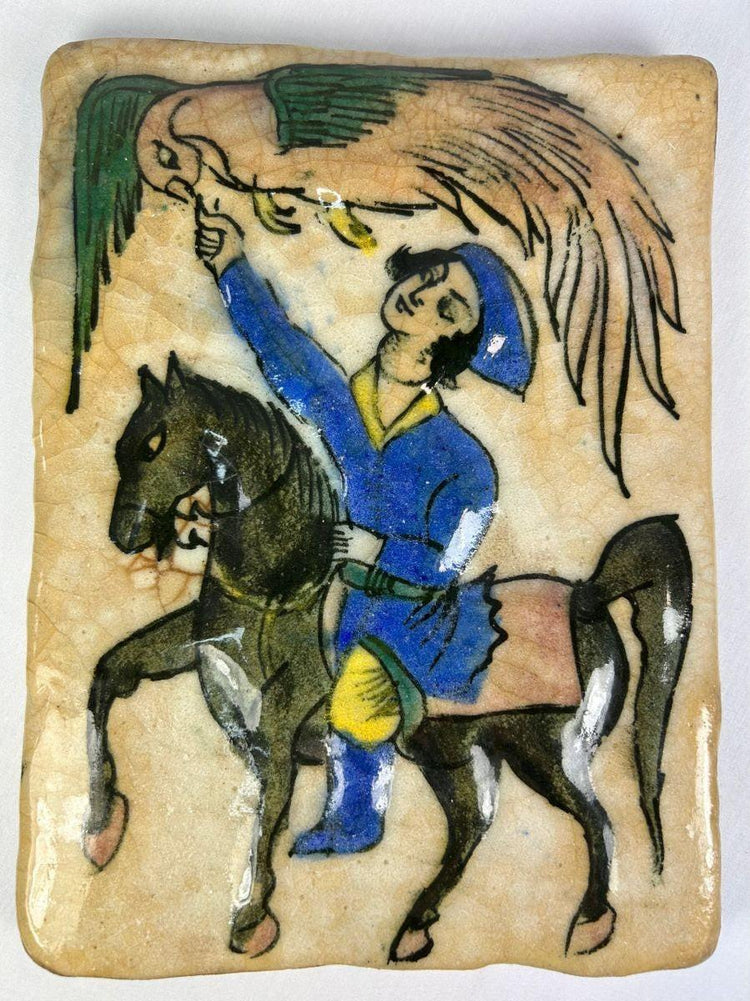Qajar Period Tile | Persian Falconry Scene in Cobalt and Green Glaze | Circa 19th Century
Description
More
Less
Historical Context & Origin
Region: Persia (modern-day Iran)
Material: Glazed ceramic
Period: Qajar Dynasty, 19th century
Description
This is a finely hand-painted Persian ceramic tile depicting a mounted falconer reaching toward a soaring bird of prey, rendered in vivid tones of cobalt blue, green, yellow, and black. The figure, dressed in traditional Qajar-era garb, rides a black steed against a cream-colored background with a pronounced crackle glaze. The stylized depiction of the falcon and the rider—iconic motifs in Persian heroic and hunting imagery—exemplifies the romanticized courtly art of the period. While distinctly Qajar in execution, the piece shows influence from earlier Iznik Ottoman and Safavid Persian traditions, especially in its palette and line work. The rear is unglazed with natural wear, indicative of authenticity.
Features
- Vivid hand-painted imagery of a falconer on horseback
- Traditional Persian crackle glaze over earthenware
- Qajar-era attire and falconry symbolism
- Thick, kiln-fired ceramic construction
- Unmounted, with rough reverse side typical of architectural tiles
Cultural Significance
Falconry scenes were popular motifs in Persian art, symbolizing nobility, strength, and the refined lifestyle of the court. Tiles such as this were often incorporated into decorative wall panels, pavilions, and the interiors of aristocratic homes and palaces, reflecting both aesthetic sensibilities and cultural ideals of the Qajar elite.
Condition
Good antique condition with stable craquelure and minor glaze wear consistent with age. No evidence of restoration.
Dimensions (approximate)
Height: 8.75 in
Width: 6.25 in
Depth: 0.75 in
Age
Circa 19th century (Qajar Period)
Description
Historical Context & Origin
Region: Persia (modern-day Iran)
Material: Glazed ceramic
Period: Qajar Dynasty, 19th century
Description
This is a finely hand-painted Persian ceramic tile depicting a mounted falconer reaching toward a soaring bird of prey, rendered in vivid tones of cobalt blue, green, yellow, and black. The figure, dressed in traditional Qajar-era garb, rides a black steed against a cream-colored background with a pronounced crackle glaze. The stylized depiction of the falcon and the rider—iconic motifs in Persian heroic and hunting imagery—exemplifies the romanticized courtly art of the period. While distinctly Qajar in execution, the piece shows influence from earlier Iznik Ottoman and Safavid Persian traditions, especially in its palette and line work. The rear is unglazed with natural wear, indicative of authenticity.
Features
- Vivid hand-painted imagery of a falconer on horseback
- Traditional Persian crackle glaze over earthenware
- Qajar-era attire and falconry symbolism
- Thick, kiln-fired ceramic construction
- Unmounted, with rough reverse side typical of architectural tiles
Cultural Significance
Falconry scenes were popular motifs in Persian art, symbolizing nobility, strength, and the refined lifestyle of the court. Tiles such as this were often incorporated into decorative wall panels, pavilions, and the interiors of aristocratic homes and palaces, reflecting both aesthetic sensibilities and cultural ideals of the Qajar elite.
Condition
Good antique condition with stable craquelure and minor glaze wear consistent with age. No evidence of restoration.
Dimensions (approximate)
Height: 8.75 in
Width: 6.25 in
Depth: 0.75 in
Age
Circa 19th century (Qajar Period)
You May Also Like


















